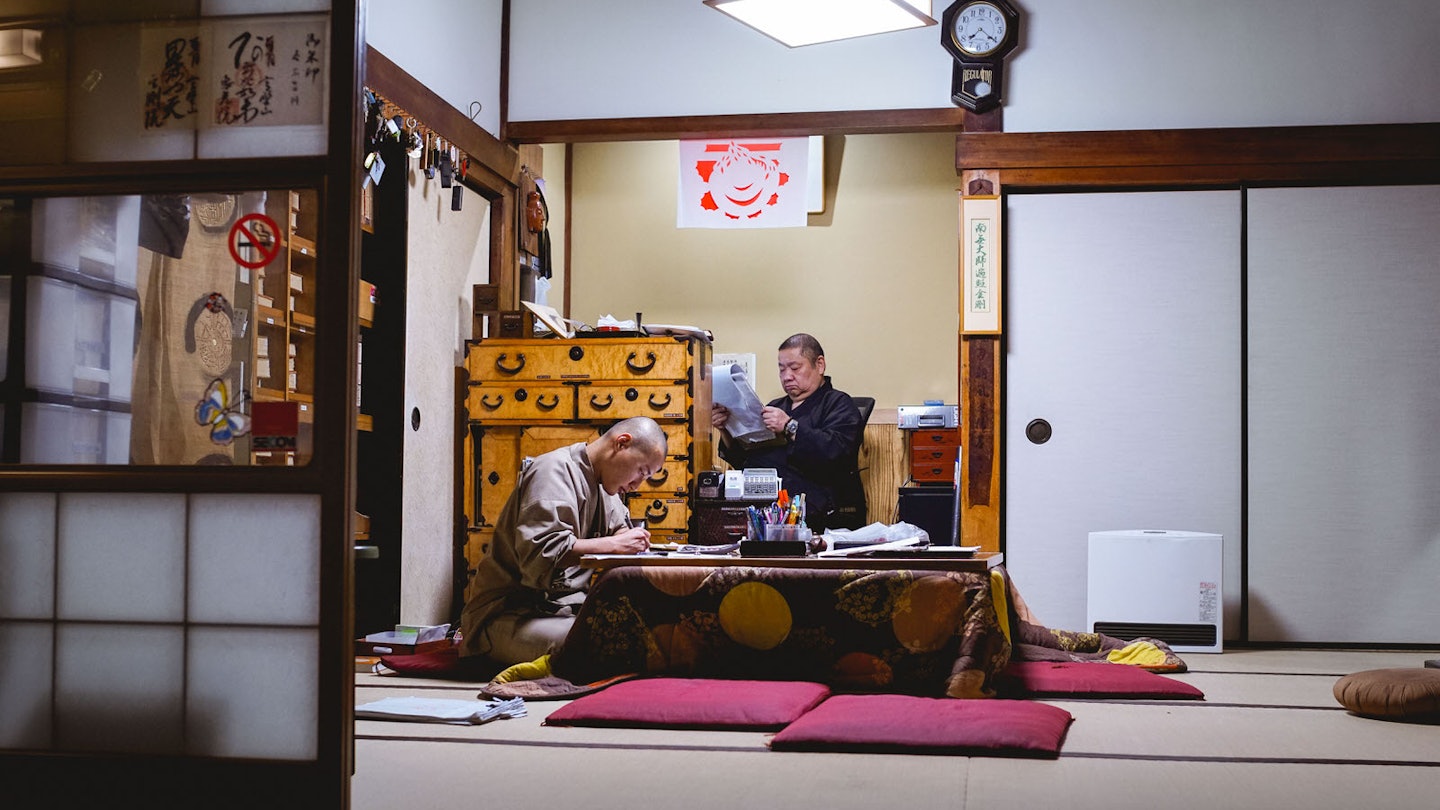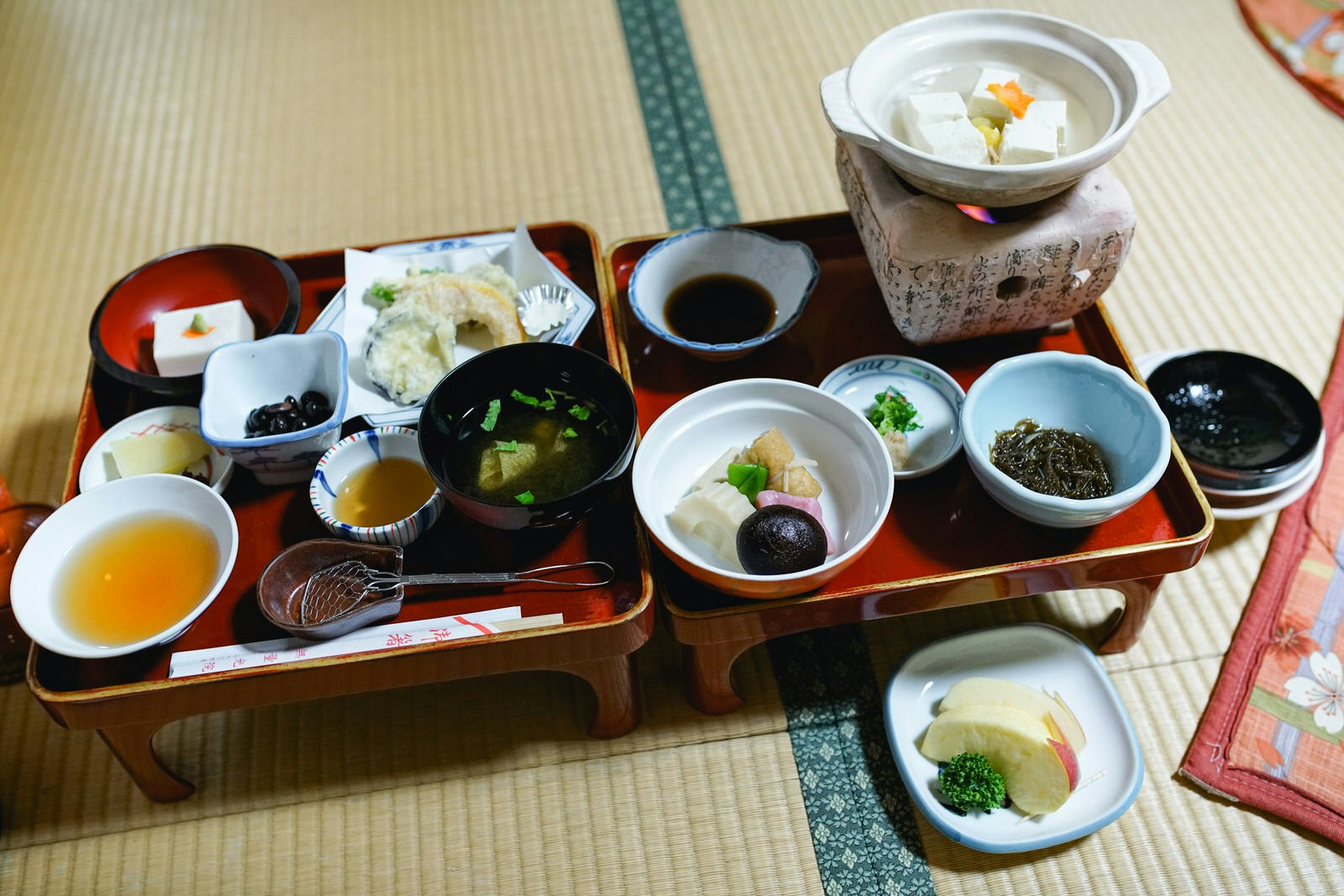
The 30 best countries, cities and regions to visit in 2025
May 22, 2019 • 5 min read

Monks at Eko-in tackle some paperwork © James Gabriel Martin / Lonely Planet
High in the undulating woodlands of the Kii Peninsula, on a raised tableland at the peak of a mountain, sits Kōya-san. This sacred place offers serenity, room for reflection, and a captivating glimpse of authentic Japan. Visitors who make the journey through the region's narrow valleys and tree-capped peaks can experience temple lodgings, dawn meditation with Buddhist monks and unique dining practices.
Although it is only 50km from the bustling, neon-soaked streets of Osaka, Kōya-san has a rustic, natural beauty that makes a trip here like stepping into another world.

The story of Kōya-san
Founded in the 9th century by the monk Kūkai (known posthumously as Kōbō Daishi), Kōya-san’s monastic complex is the active headquarters of the Shingon school of Esoteric Buddhism, a faith with a wide following throughout Japan.
In 804, Kōbō Daishi boarded a ship bound for China, where he spent two years studying the teachings of Master Huiguo before returning home to share the knowledge that he had gained. In 816, with the help of followers, he built a temple – the precursor of Kongōbu-ji – on a plain at the top of the mountain. The settlement was expanded with the addition of the Garan, a complex of striking halls, temples, pagodas and religious monuments.
A Unesco World Heritage Site, named as part of the Sacred Sites and Pilgrimage Routes in the Kii Mountain Range, today Kōya-San has 117 temples, and around 50 of them cater to travellers wishing to stay. To the east, the river Tama-gawa flows through Oku-no-in cemetery, a vast resting place with lantern-lit stone pathways snaking through a thick cedar forest towards the sacred mausoleum of Kōbō Daishi. Here, legend says, the monk is waiting in a state of deep meditation.
Related content:
Hiking the Kumano Kodō: Japan's ancient pilgrimage route
First time Wakayama: a guide to Japan's spiritual heartland
How to soak up wellness in Wakayama's onsens
Staying in a temple
Due to the travel time required to reach Kōya-san, a day trip isn’t recommended; to enjoy the full experience, aim to spend at least one night.
Visitors don yukata (light cotton kimono) in the evening and sleep on simple futon bedding on tatami-mat floors. The atmosphere is tranquil and certain temples allow guests to take part in activities such as calligraphy and Ajikan meditation, as well as the entrancing fire ceremony. Visitors at all temples are welcome to accompany monks as they hold their morning devotions.

Temple lodging, called shukubō, is extremely popular, so booking in advance is essential. The town has a range of options, and bookings can be made directly through the official Shukubo website. Prices include breakfast and dinner, and vary from temple to temple according to selected room type and meal plan. This can range from ¥9700 per person for an old-style Japanese room with a shared bathroom to ¥16,000 for a room with a garden view and a private bathroom. Shukubo retreats normally do not accept credit cards, so take cash.
Meditation guidance
A Buddhist service is held every morning at shukubō temples, usually at 6am. During the service, the chief priest and monks can be witnessed chanting sutras in rhythmic unity in the main temple hall. Selected temples also hold afternoon meditation sessions, usually around 4pm or 5pm. Information on the exact times for the practices at each temple is available at the office upon check-in or by emailing the Shukubo Association.

Dining experiences in Kōya-san
Temples in Kōya-san specialise in a vegetarian Buddhist cuisine called shōjin-ryōri, using seasonal vegetables, cereals, seaweed and edible wild plants found in the region. Focusing on balance, seasonality and harmony with nature, dishes are rooted in Buddhist mental training and match five methods, five tastes and five colours.
Specialities include unique kōya-dofu tofu, as well as its sesame-flavoured relative goma-dofu. Established at the time the town was founded, the cuisine has evolved while still maintaining its core principles.
Following morning prayer, visitors eat communally, cross-legged on the floor of the dining room, where trays packed with a selection of dishes are served while monks make the rounds with freshly cooked white rice and green tea. Evening meals are usually brought to guests’ sleeping quarters. Visitors to Kōya-san can also sample shōjin-ryōri in some restaurants in the town.

Touring Oku-no-in cemetery
The most sacred site in the region, Oku-no-in cemetery is a vast resting place with lantern-lit stone pathways snaking through a thick cedar forest towards the sacred mausoleum of Kōbō Daishi.
The cemetery has more than 200,000 memorial towers, including the graves of feudal lords and shōguns, poets, writers and giants of Japanese industry. Anyone is welcome to have a plot, regardless of religion or nationality. And here, legend says, Kōbō Daishi waits.
The most moving way to experience the cemetery is to take a night tour guided by a monk. The (weather-dependent) tours are operated by the Ekō-in temple, but are open to visitors staying at other temples. Orange lanterns line the path, depicting crescent and full moons, reflecting the belief that our minds also follow shifting phases. The tour stops at the river to allow visitors to cleanse themselves in a ritual that involves washing a Buddhist statue of their choosing. From there, guests can step foot on the final stretch of hallowed ground leading to the final resting place of Kōbō Daishi. A long-held belief states that the ancient monk is not dead, but is in a deep state of meditation as he awaits the appearance of the future Buddha, and monks can be seen bringing offerings of fresh food to the tomb every morning.
How to get to Kōya-san
Kōya-san is under two hours from Osaka by train (via the Nankai Railway), followed by a short cable-car ride up the mountain and 10-minute bus journey into the town itself; or there's a new limousine bus direct from Kyoto.
https://shop.lonelyplanet.com/products/japan-travel-guide-15
Plan with a local
